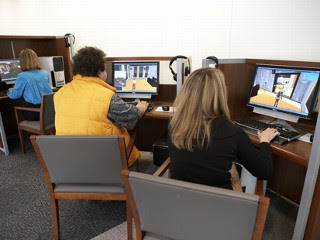
Although it may be pretty obvious that allowing a user to customize their
avatar would lead them to enjoy whatever service they’re using, new research confirms this conventional wisdom for children as well. (An avatar is simply a graphical representation of a person in a virtual or other online environment).
In a small study of 30 children ages 10 to 12, researchers found evidence to support their hypothesis that avatar customization (as opposed to being assigned an avatar, or choosing from a stock set of avatars) can affect both subjective feelings of presence and physiological indicators of emotions during their time playing a game:
For game producers and sponsors, this means that creating more customizable games may make the experience more sympathetically arousing, which may in turn affect the strength of the emotional valence experienced, whether positive, negative, or both. Because arousal has been identified as a key component of game and media enjoyment, this information is useful for those trying to build brands. The findings of this study indicate that offering more customization options in terms of avatars may make games more enjoyable with higher highs and lower lows. It is likely that making these games more physiologically arousing will keep players coming back to play and playing longer, which gives sponsors of advergames with customization options several advantages, mainly a willing audience who will spend more time with their brands.
“Advergames” refers to games played on a brand’s website that marketers hope will encourage the adoption and affiliation of their brand in the game player’s mind. The researchers for this experiment looked at the games available through Kellogg’s Go-Tarts, Nestle’s Wonka Donutz, and Fruit by the Foot, a brand extension of Fruit Roll-Ups.
So what is this “
presence” thing? It’s generally thought of as a psychological state in which virtual objects are experienced as actual objects in both sensory and nonsensory ways. The more presence once experiences, the more one feels like one is actually “there,” a part of the integrated online experience. If you’re creating an advergame, the more presence you have, the more likely a person is going to return and play your game again.
It also suggests more broadly that whether you’re playing a game or participating in an online forum or support group, a place that allows you to customize your experience is going to enhance a person’s feelings toward that game or community more than one that forces everyone into the same user experience. While this study only focused on avatars, one could logically extend these findings to a user’s entire experience while in a game or forum.
Reference:
R. Bailey, K. Wise, and P. Bolls, How Avatar Customizability Affects Children’s Arousal and Subjective Presence During Junk Food–Sponsored Online Video Games, CyberPsychology & Behavior 12 (3) (2009).

 Da uno studio svolto su ventotto giovani adulti, dall'Università del Maryland, presso lo Human Interface Technology Laboratory, si è visto come l'esposizione ripetuta ad "ambienti virtuali", riduce la percezioni del dolore, a causa in primis dello spostamento dell'attenzione.
Da uno studio svolto su ventotto giovani adulti, dall'Università del Maryland, presso lo Human Interface Technology Laboratory, si è visto come l'esposizione ripetuta ad "ambienti virtuali", riduce la percezioni del dolore, a causa in primis dello spostamento dell'attenzione.
